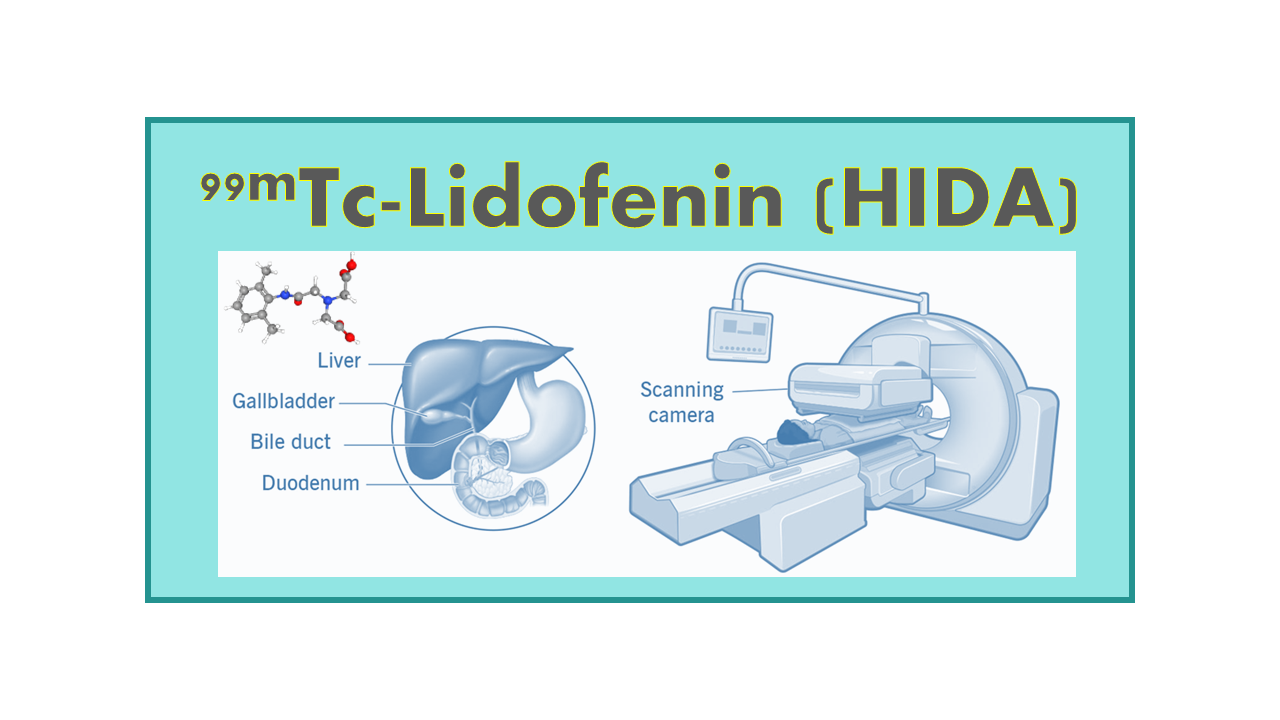
99mTc-Lidofenin (HIDA)
April 7, 2024
99mTc-Lidofenin (HIDA) is a radiopharmaceutical used for hepatobiliary imaging, specifically in Single Photon Emission Computed Tomography (SPECT) scans. This agent is commonly used to evaluate the function of the liver and the biliary system by tracking the uptake and excretion of the tracer in these organs.
The chemical structure of 99mTc-Lidofenin consists of a technetium-99m radionuclide attached to a ligand known as Lidofenin. This ligand helps in the specific binding of the tracer to hepatocytes and allows for imaging of the liver and bile ducts. The radiopharmaceutical is administered intravenously to the patient, where it is taken up by the liver and excreted into the bile, providing valuable information about the hepatic function and biliary patency.
The introduction of 99mTc-Lidofenin has revolutionized the field of nuclear medicine by providing a non-invasive imaging technique for the hepatobiliary system. This radiopharmaceutical has greatly enhanced our ability to detect and diagnose a wide range of liver and biliary diseases, including cholecystitis, biliary obstruction, and liver function abnormalities. By utilizing 99mTc-Lidofenin, healthcare professionals are able to obtain detailed and accurate images of the liver and biliary tract, allowing for early detection and effective management of hepatic and biliary disorders. The use of this radiotracer has proven to be a valuable tool in the field of nuclear medicine, leading to improved patient outcomes and better overall healthcare delivery.
Description
99mTc-Lidofenin (99mTc-HIDA, 99mTc-2,6-Dimethyl Iminodiacetic Acid, 99mTc-(2-[carboxylatomethyl-[2-(2,6-dimethylanilino)-2-oxoethyl]amino]acetate)) is a generic SPECT hepatobiliary imaging agent from the 99mTc-IDA tracer family introduced on the market in 1998.
Clinical applications
99mTc-Lidofenin is used to perform scans of the liver, the gallbladder and the bile duct which are usual paths of bile excretion. This agent is indicated for diagnosis of hepatobiliary dysfunction and for differentiation of jaundice. It is used in diagnosis of hepatitis, hepatic duct occlusion, gallbladder functional disorders, inflammation of the hepatobiliary system, and cholecystitis.
Availability
Lidofenin kits were available under the brand name: HIDA (Draximage). Draximage discontinued this product in the US in 2007. Lidofenin had also at it beginning the generic name Hepato-Scan. This tracer is not anymore available on the US market and replaced by 99mTc-Mebrofenin or 99mTc-Disofenin.
Technescan HIDA (Mallinckrodt) has been discontinued as well.
Competition
There are several marketed products next to the available 99mTc-Lidofenin for the imaging of the hepatobiliary tract including 99mTc-Disofenin, 99mTc-Mebrofenin, 99mTc-EHIDA. All of them are generics.
Comments
Several IDA analogues have been developed beside the marketed ones, including HEPIDA, 99mTc-Etifenin, 99mTc-PIPIDA or 99mTc-Galtifenin. It seems that 99mTc-Mebrofenin remains the tracer with the best performance and has replaced Lidofenin.